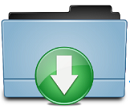BIOACTIVATORS EFFECTIVENESS AND UTILIZATION IN BULKING AGENTS OF WATER HYACINTH AS COMPOST
DOI:
https://doi.org/10.24853/jisi.1.2.%25pAbstract
Water hyacinth is a water plant species of the most dominating in the waters –waters or rivers - rivers. Water hyacinth has the ability to multiply very quickly that in aninstant the surface waters can be closed by the presence of water hyacinth. Researchshows that the extent of cover of water hyacinth is now more widely because of the abilityof growing 2.6 times faster in open water. This can be overcome by using water hyacinthand processes it into compost, because the water hyacinth contains a very high watercontent of 96%, then to reduce the water content is added bulking agent and to acceleratethe composting process that is able to degrade added bioactivator water hyacinth.In this study the materials used are water hyacinth, and as a bulking agent iszeolite, bentonite, sawdust. Then the water hyacinth and bulking agent are mixed, thenaddedbioactivator Primadek, EM4 and, on each - each treatment. The composting processusing aerobic composter. The composting process is stopped when the C / N ratio hasreached the limit required by the SNI Compost (10-20). This process is conducted in adevice called a composter.The results showed that, for the treatment of water hyacinth with zeolite andcompostEM4 mature at day 14, water hyacinth with bentonite and EM4 pda day 15. In general,the resulting compost compost quality standards (SNI 19-7030-2004), unless the ratio ofC / N for EG + SG + EM4 newly reached 43.88. Based on the results of VarianceAnalysis (Anova) followed by DMRT showed that the addition of bulking agent and fortreatment bioactivator + Z + EM4 EG and EG + B + EM4 significantly different in C / Nratio of compost but not significantly different in content of nitrogen (N), phosphorus (P)and potassium (K).Downloads
Published
Issue
Section
License
COPYRIGHT POLICY
The author(s) of an article published in the JISI UMJ retains ownership of the intellectual property rights in work (s).
PUBLISHING RIGHTS
The author(s) of an article published in the JISI UMJ have unrestricted publication rights. The authors give the JISI UMJ the right to publish the article and designate the Industrial of Engineering Universitas Muhammadiyah Jakarta Publishing as the original publisher of the article.
LICENSING POLICY
Journal of Industrial Engineering and Sciences is an open-access journal that follows the Creative Commons Non-Commercial 4.0 International License (CC BY-NC 4.0), which states that:

Under this license, the reusers must give appropriate credit, provide a link to the license, and indicate if changes were made. Users may do so in any reasonable manner, but not in any way that suggests the licensor endorses users or their use.
Please take the time to read the whole license agreement (https://creativecommons.org/licenses/by-nc/4.0/). As long as reusers follow the license conditions, the owner cannot withdraw these freedoms. The following components are included under this license:
 Attribution: Users must provide appropriate attribution, including a link to the license, and indicate whether or not they made any modifications. Users are free to do so reasonably, but not in a manner that indicates the licensee approves of their usage.
Attribution: Users must provide appropriate attribution, including a link to the license, and indicate whether or not they made any modifications. Users are free to do so reasonably, but not in a manner that indicates the licensee approves of their usage.
 NonCommercial: Users may not use the material for commercial purposes.
NonCommercial: Users may not use the material for commercial purposes.





